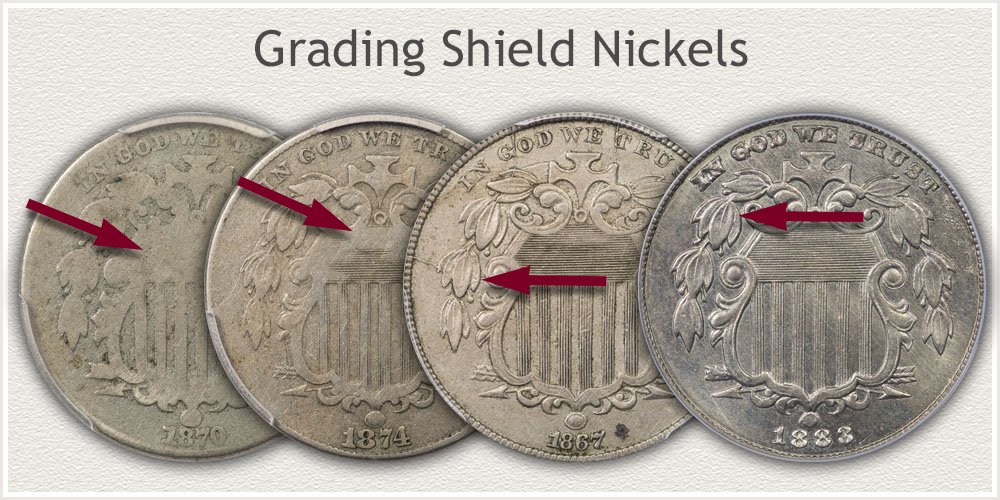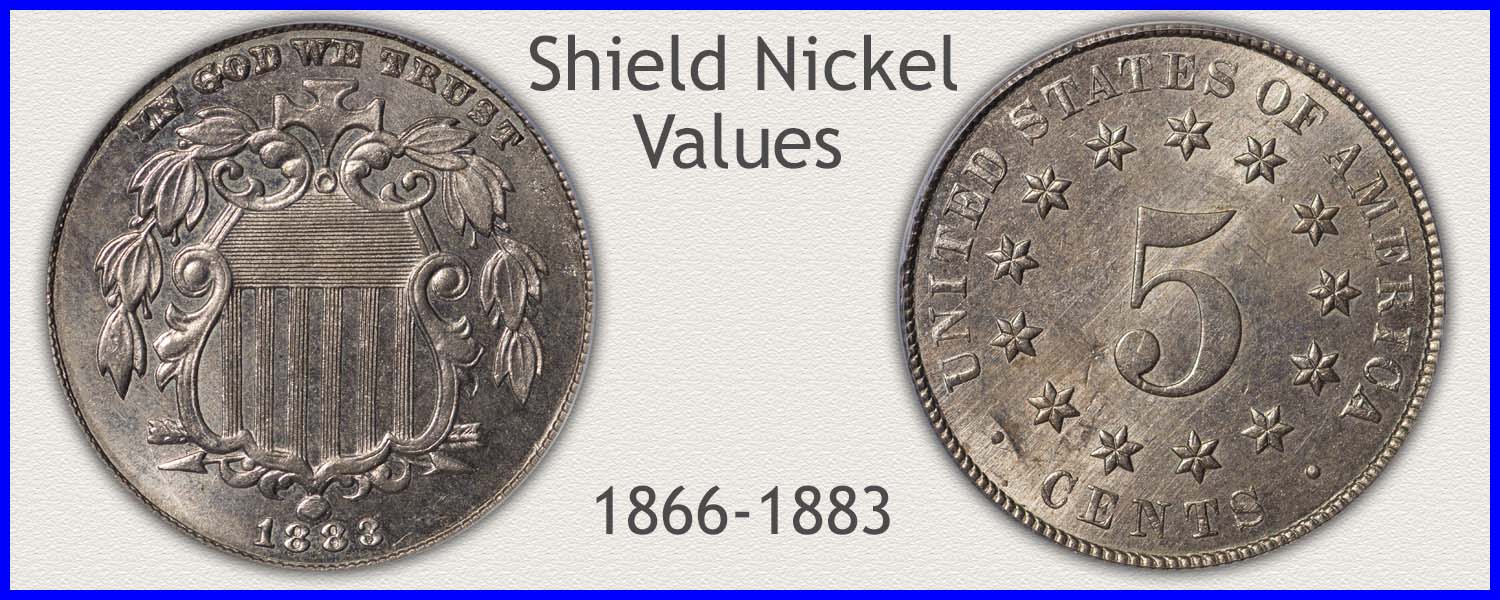Coin Values Moving with Precious Metals: Up-Dated 12/8/2025: Gold $4212 | Silver $58.12
Visual Grading Metrics
Shield Nickel Extremely Fine Grade
An Extremely Fine Grade Shield nickel retains and displays a high degree of original detail. These are lightly worn coins. In this condition, visible wear shows on high relief points and small areas of worn and missing features. Many small lines within the shield are clear, and details of the leaves are crisp.
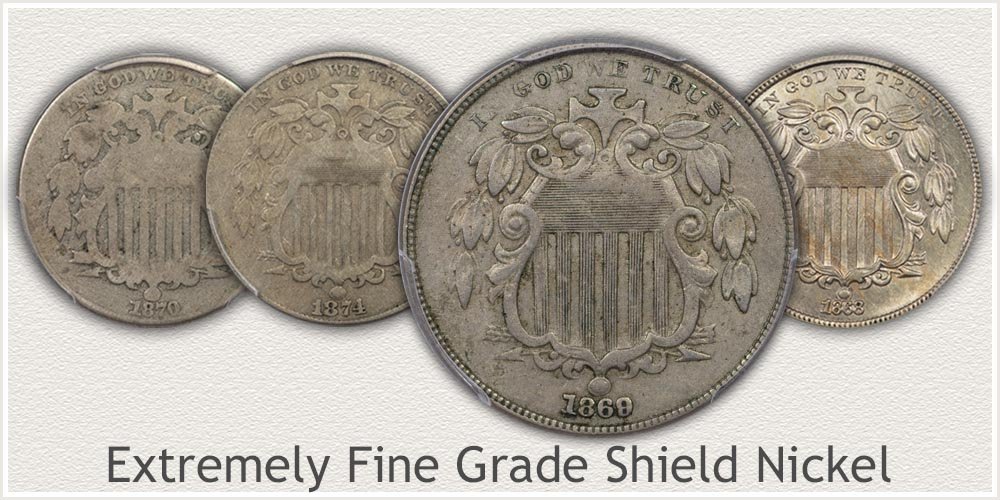 (fig. 1XF) Verify a Close Match to the Extremely Fine Condition Shield Nickel
(fig. 1XF) Verify a Close Match to the Extremely Fine Condition Shield Nickel
A comparison to the image (fig. 1XF) begins to recognize the amount of detail visible among the different conditions and grades. With this preliminary examine, match your coin closely to the Extremely fine example. These are coins considered lightly worn and within range of this high condition.
Visual Grading Metrics Identify Shield Nickels in Extremely Fine Grade
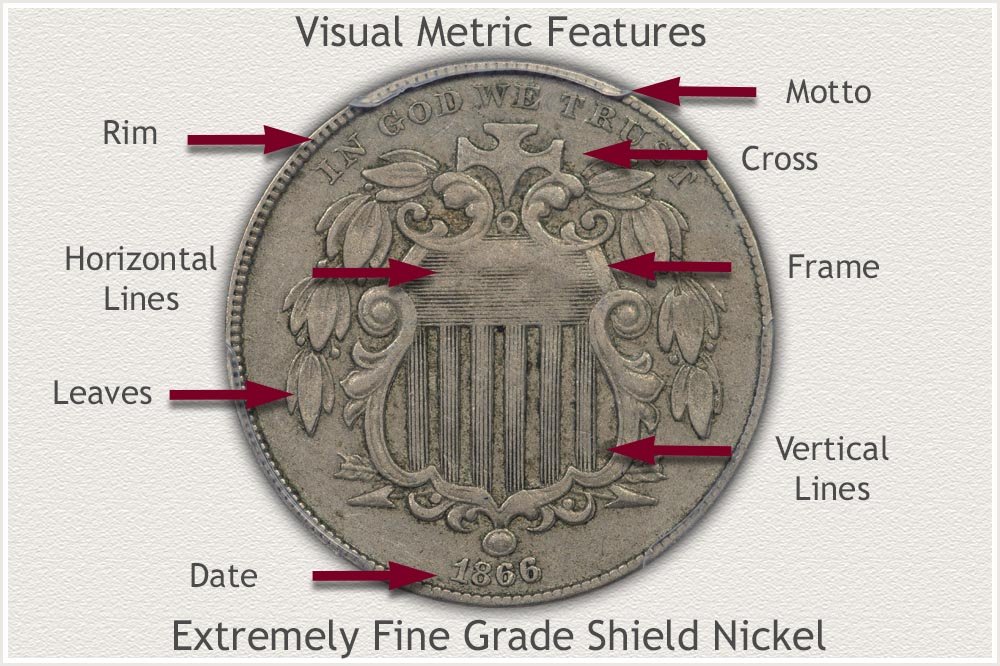 (fig. 2XF) Visual Features Used to Judge Condition of an Extremely Fine Grade Shield Nickel
(fig. 2XF) Visual Features Used to Judge Condition of an Extremely Fine Grade Shield Nickel
Examine the illustrated (fig. 2XF) coin, a professionally examined Shield Nickel graded as Extremely Fine condition. Highlighted are the areas inspected and rated based upon their visual qualities. Each area, as they wear, develops stages of clarity in remaining detail. Visual grading metrics rate and then score these stages, giving an insight into a coin's condition. Scores identify coins meeting the grade level and separate those of lesser quality.
Key Focal Points Used to Identify the Extremely Fine Grade Shield Nickel
- Date | Rim | Motto
- Cross
- Olive Branch Leaves
- Shield Frame | Vertical Lines | Horizontal Lines
Rating and Scoring the Focal Points
A cumulative rating and scoring system measures the surface condition of a coin. Creating and using a final score indicates an in-grade range. The percentage scoring of a group of nickels at the Extremely Fine grade level provides insight into the metrics of the grade range.
To quantify the metrics of an Extremely Fine grade nickel, professionally graded examples of the grade were rated and scored. This study group of nickels provided ratings that identify the visual metrics to achieve a score meeting the grade level.
🔎Tools and Techniques Useful When Grading Extremely Fine Condition Shield Nickels Within this quality level, small features require a close-up inspection. Two essential tools, lighting and magnification, help recognize subtle qualities. A single light source, near the coin, increases the contrast of high and low contours. A magnifying glass of 5x to 7x power brings small details closer and clarifies the condition.
Date | Rim | Motto: Visual Grading Metrics Rating a Positive Score
After determining a coin's condition appears similar to the example coin. Inspect three necessary qualities. Visual clarity and completeness of the Date, Rim, and Motto. Look closely at these areas; faded but visible qualifies as a positive rating. It is when an element disappears and merges with its surroundings that it falls below a positive rating.
 (fig. 3XF) Grading Metric Comparing a Clear Date to a Faded Date
(fig. 3XF) Grading Metric Comparing a Clear Date to a Faded Date
Visual Rating Definition | Date:
Clear Date: The date remains easily readable. There is no merging of any of the digit's outline with the rim or field of the coin.
Faded Date: Parts of the numbers missing or indistinct. Illustrated (fig. 3XF) shows a date below the Clear Date Metric.
Rating: Clarity of the Date
|
Clear Date |
Faded Date |
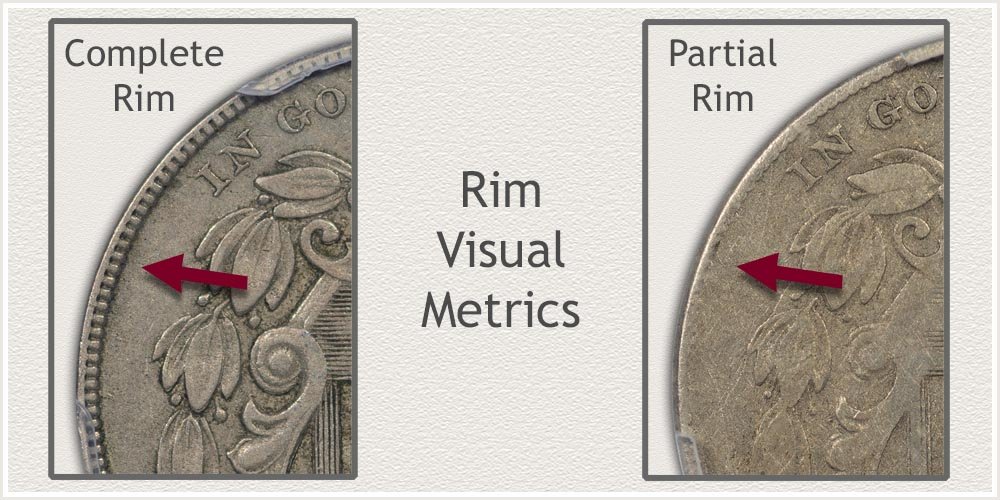 (fig. 4XF) A Comparison of the Complete vs. Partial Rim Metric
(fig. 4XF) A Comparison of the Complete vs. Partial Rim Metric
Visual Rating Definition | Completeness of the Rim
Complete Rim: The outer edge rises above the field of the coin. This raised detail shows an inner edge meeting the lower field. A visible inner edge along the entire rim qualifies the coin for the Complete Rim Metric.
Partial Rim: Missing areas of the rim (fig. 4XF) show as smooth areas along the rim without a defining edge. Scan the entire rim; these areas of weakness happen anywhere along the perimeter.
Rating: Quality of the Rim
|
Complete Rim |
Partial Rim |
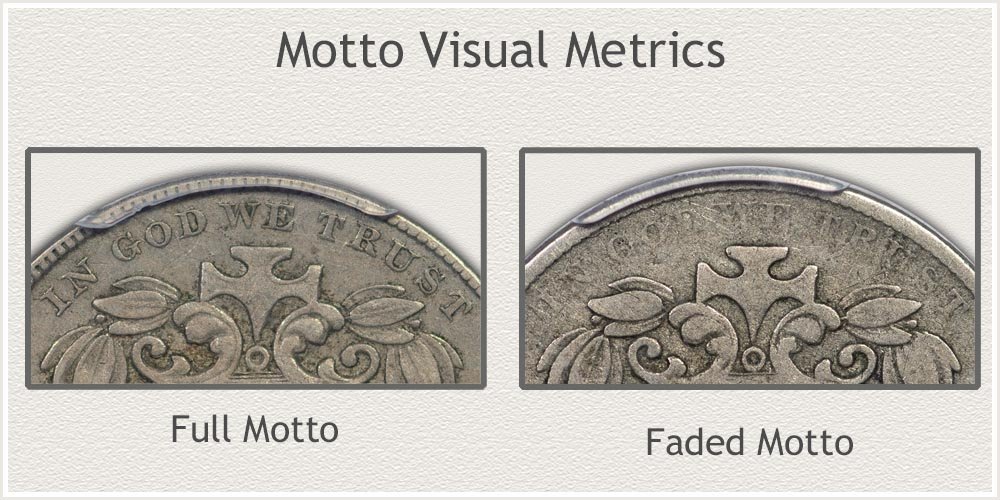 (fig. 5XF) Visual Quality of a Full Motto and Faded Motto
(fig. 5XF) Visual Quality of a Full Motto and Faded Motto
Visual Rating Definition | Motto Lettering
Full Motto: All letters of the Motto clear and readable qualifies as the Full Motto Metric. Full outlines of each letter remain visible. Light wear defines the Extremely Fine condition.
Faded Motto: Any missing parts of the letters indicate a large amount of wear. Lettering in the illustration (fig. 5XF) gives an indication of below grade quality.
Rating: Motto Lettering
|
Full Motto |
Faded Motto |
Using these grading metrics, examine and Score the condition of your nickel. Check those that apply.
Scoring: Visual Metrics: Date | Rim | Motto
|
Positive Score |
Design Device |
Visual Grade Metric |
|
|
Date |
Clear Date |
|
|
Rim |
Complete Rim |
|
|
Motto |
Full Motto |
Research Data Results: Date | Rim | Motto
Study Group of 33 Extremely Fine Grade Shield Nickels
An examination of the study group of nickels, judging their Date, Rim, and Motto, showed the following percentage results.
100% | Remained with a Clear Date
100% | Showed a Complete Rim
100% | Of the Nickels Displayed Full Letters Within The Motto
Conclusion/Key Points: All 33 nickels, 100% of the study group, scored a positive rating in each of the three areas. Clear Date | Complete Rim | Full Motto. This first inspection confirms these features as a strong requirement. It also indicates the nickel begins to qualify at the Extremely Fine grade level. Examining and judging additional visual metrics narrows its condition range.
Cross: Visual Grading Metrics Earning a Positive Score
A large cross is positioned above the shield between the beginnings of two olive branches. Design details of the cross include a raised edge bordering a slightly raised and contoured center. In Extremely Fine grade the Cross displays light wear over most of its surface.
Visual grading metrics focus on the edge detail of the cross to determine the amount of light wear. Judge this edging detail in two parts. Inspection of the straight ends develops the first metric. A second metric inspects the curved edges forming the arms.
Visual Metric: Straight Edge Detail of the Cross
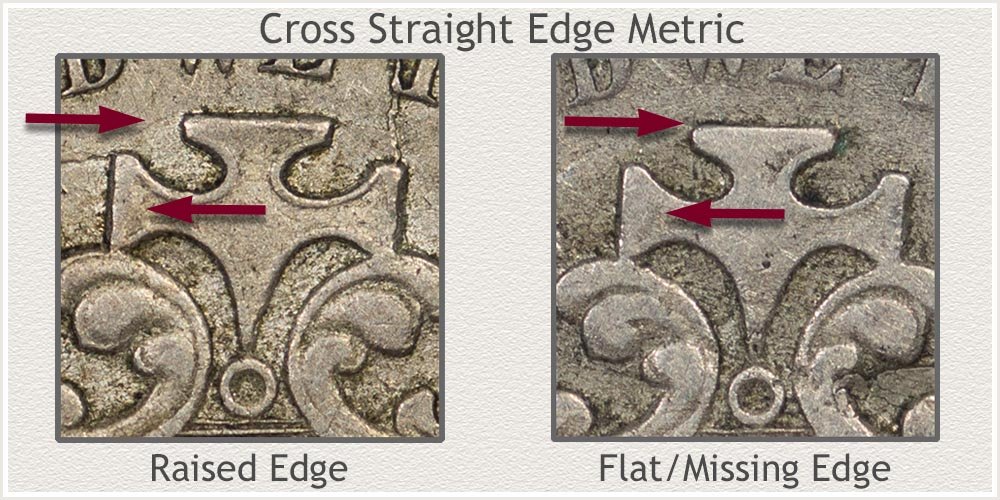 (fig. 6XF) Visual Metrics of Raised and Missing Straight Edge Cross Ends
(fig. 6XF) Visual Metrics of Raised and Missing Straight Edge Cross Ends
At the very ends of the Left, Top, and Right arms of the cross, a straight inner edge is part of the design. Quality of this inner side of the straight edge becomes a visual metric when judging condition.
Refer to the stages of wear illustrated (fig. 6XF) showing the visual differences of wear on the straight inner edge. Since these coins start in the "light wear" category, two levels of condition begin to separate nickels into the Extremely Fine grade level. Examine and rate the straight inner edges on the Cross using the following definitions.
Visual Rating Definitions | Cross: Straight Inner Edge of the Three Arms
Visible Raised Edge: The inner side of the edge is worn but remains visibly raised, often rounded. This edge is clearly above the interior of the cross.
Flat/Missing Edge: Inner edges appear flattened without any signs of a contour or raised height. This flatness extends and connects to the interior of the cross.
Count and record the number of straight cross ends with a Raised Inner Edge. Three straight cross ends give a possible high score total of 3.
Rating: Cross: Straight Inner Edge of the Arms
|
Three Raised Edges |
Two Raised Edges |
One Raised Edge |
No Raised Edges |
The condition of small details within the cross leads directly to an in-depth assessment of grade potential. Score the quality of cross ends, adding to an overall condition judgement. 2 to 3 Raised Straight Edges Rates a Positive Score.
Scoring: Cross: Straight Inner Edge of the Arms
|
|
Positive Score |
2 to 3 Raised Straight Edges
Research Data Results: Cross Straight Inner Edge of the Arms
Study Group of 33 Extremely Fine Grade Shield Nickels
This metric was applied to 33 study Shield nickels graded Extremely Fine. The following are the percentages of coins meeting each metric.
75% | Showed All 3 Straight Edges Raised
25% | 2 Raised Edges
0% | 1 Raised Edge
0% | No Visible Raised Edges
Conclusion/Key Points: Scoring within the 2 to 3 Raised Edge range clearly indicates light wear at the grade level. Of the 33 coins, 100% placed within this range. This gives a clear indication of the amount of visible detail found on Extremely Fine grade nickels. Use the Metric of 2 to 3 Raised Straight Edges Rating as a Positive Score.
Visual Metric: Curved Edge Detail of the Cross
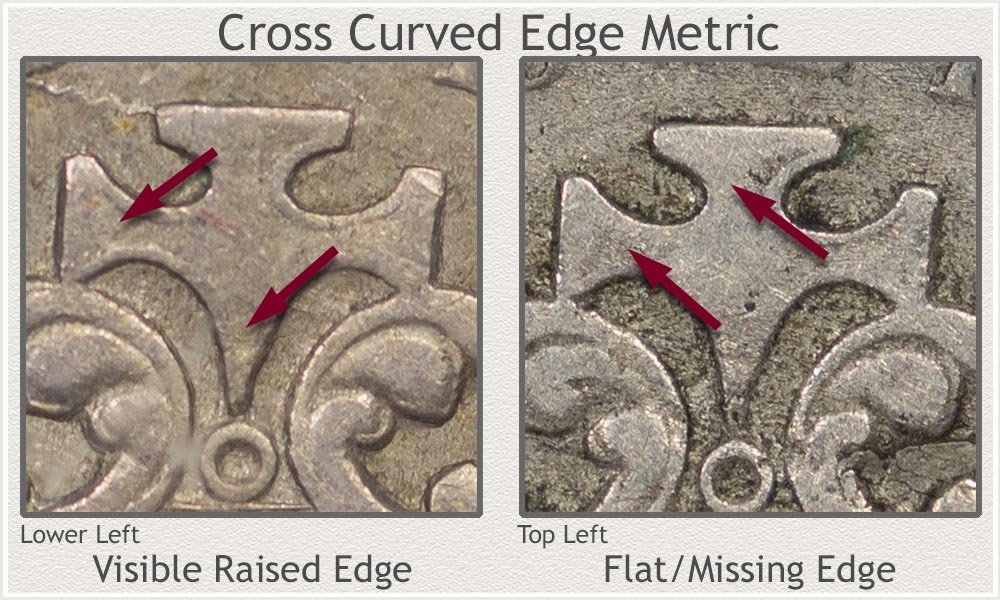 (fig. 7XF) Stages of Wear Grading Metric of the Cross Curved Edges
(fig. 7XF) Stages of Wear Grading Metric of the Cross Curved Edges
A second metric examines the condition of only the Curved areas of edging. These show along the inside perimeter of the cross.
Examine the image (fig. 7XF) noting a raised inner edge partially visible in some areas along the perimeter of the cross extensions. A small amount of wear flattens this raised edge, causing it to become less distinct in areas. Other areas along the inner side of the edge are bolder. Additionally, some spots are completely flattened and blended towards the interior of the cross.
To quantify this visual metric, there are four curved edges to the cross. Upper left and right, and Lower left and right. Judge each using the following definitions.
Visual Rating Definitions | Cross: Curved Inner Edge of Arms
Visible Raised Edge: This curved edge remains easily visible along most of its length on the inner side.
Flat/Missing Edge: The definition of the inner edge is hard to distinguish. Most of the edge's inner side appears faint and merged with the interior of the cross.
Rate and record the number of Visible Raised Inner Curved Edges. High count is 4.
Rating: Cross Curved Inner Edges
|
Four |
Three |
Two |
One |
Inspecting these inner edges of the cross determines subtle amounts of detail. High grade Shield nickels meet high quality standards. Score the results. Three to Four Visible Raised Curved Edges Rates a Positive Score
Scoring: Cross Curved Inner Edges
|
|
Positive Score |
3 to 4 Visible Edges
Research Data Results: Visible Curved Inner Edge Detail of Cross
Study Group of 33 Extremely Fine Grade Shield Nickels
A total of 33 Shield Nickels in Extremely Fine grade when examined providing the following percentage results.
67% | Displayed Detail on All 4 Curved Edges
33% | Displayed Detail on 3 Curved Edges
0% | No Coin Displayed Only 2 or Fewer Detailed Curved Edges
Conclusion/Key Points: A greater amount of detail shows on Shield Nickels in Extremely Fine grade. Raised curved edges on the cross add important quality to these coins. A strong requirement of 3 to 4 edges with visible detail along most of the inner edge places the coin well within grade standards.
Olive Branches | Leaf Detail Visual Grading Metrics
Olive branches on the sides of the shield provide many grading metrics. These branches are high relief with many design features. Note the leaves are grouped into clusters. Additionally, they have raised edges with low contoured centers featuring a central vein. Wear on the leaves show typical patterns used when judging condition.
Notice there are four leaf groups per branch, with each group having a top leaf. The top most leaf, overlaying those below, represents a high area subject to initial wear. The first visual metric inspects the overall condition of these eight top overlay leaves.
Visual Grading Metric: Complete Top Leaf Outline
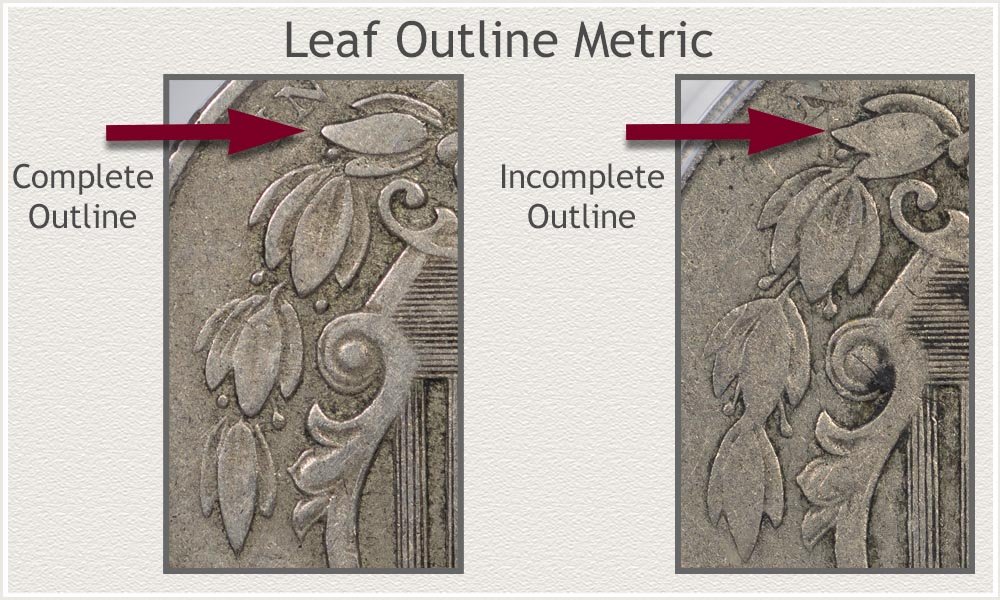 (fig. 8XF) Complete and Incomplete Top Leaf Outlines Grading Metrics
(fig. 8XF) Complete and Incomplete Top Leaf Outlines Grading Metrics
A very distinct metric examines the outline of the top leaf of each leaf group. With four leaf groups on each branch, a total of eight top leaves are part of the design and examined. These top leaves receive initial wear, and with a complete outline remaining, indicate only light wear.
The two examples (fig. 8XF) illustrate the Complete and Incomplete Outlines of top leaves. The greater amount of wear removes part of the outline on one of the leaves. Consider this leaf as an incomplete outline.
The following describes the visual metric applied to each of the eight top leaves.
Visual Rating Definitions | Top Leaf Outline
Complete Top Leaf Outline: A distinct outline defines the outer edge of each top leaf.
Incomplete Top Leaf Outline: Missing areas of the outline on any part of each top leaf.
Examine and then rate each of the eight top leaves and determine the completeness of its outline. High count is 8 leaves with complete outlines.
Rating: Top Leaf Outline
|
7 to 8 Top Leaves Complete Outlines |
5 to 6 Top Leaves Complete Outlines |
0 to 4 Top Leaves Complete Outlines |
Scoring the number of top overlay leaves places the coin's condition within a grade range. 7 to 8 Top Leaves with Complete Outlines Rates a Positive Score.
Scoring: Top Leaf Outline
|
|
Positive Score |
7 to 8 Top Leaves Complete Outlines
Research Data Results: Top Overlay Leaf Outline
Study Group of 33 Extremely Fine Grade Shield Nickels
This complete outline on top leaves metric applied to the 33 study nickels produced a strong result. The following are percentage numbers of nickels within the rating categories.
79% | Showed all 8 Top Leaves with Complete Outlines
21% | 7 Top Leaves with Complete Outlines
0% | 5 to 6 Leaves with Complete Outlines
0% | 4 or Less Leaves with Complete Outlines
Conclusion/Key Points: Light wear defines the Extremely Fine grade. This top leaf metric provided a clear indication of the condition expected at this grade level. A faded/missing portion of a leaf edge on one leaf appears on only 21% of the coins graded Extremely Fine. 79% of the study coins remained with all eight leaves fully outlined. Significantly, no coins with only six full outlines meet grade standards. Score the condition by the following metric. 7 to 8 Top Leaves with Complete Outlines Rates a Positive Score.
Visual Grading Metric: Top Leaf Wear Amount
This metric determines the amount of visible detail remaining on the top leaf of each leaf group. Top leaves, because of their high position overlaying lower leaves, provide an excellent area to judge condition. Wear concentrates across the highest points of the Olive Branch feature. Extent of leaf detail determines if the nickel meets the light wear description of the Extremely Fine grade.
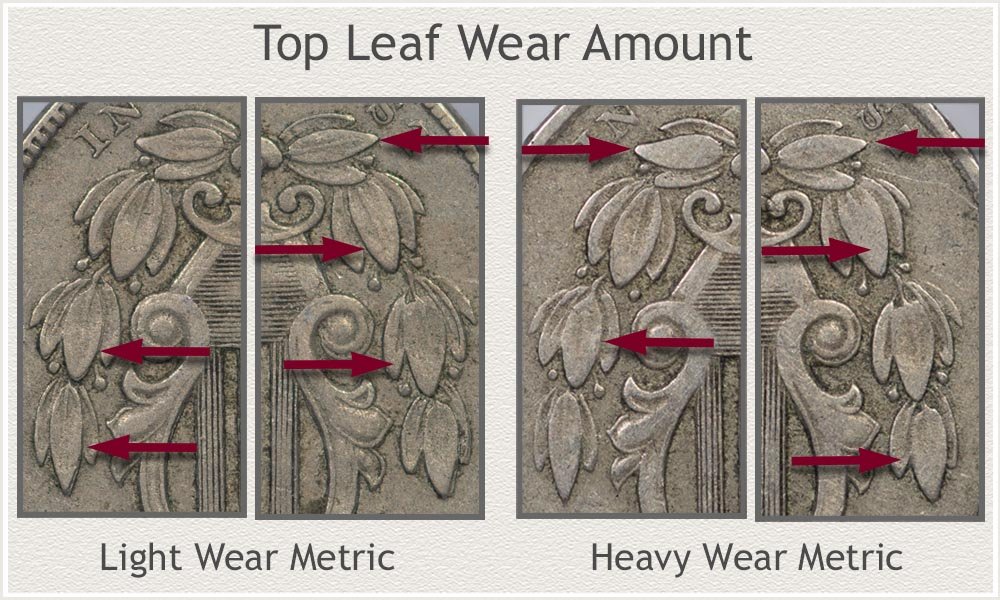 (fig. 9XF) Light Wear and Heavy Wear Metrics of Top Leaf Detail
(fig. 9XF) Light Wear and Heavy Wear Metrics of Top Leaf Detail
Eight top leaves of the olive branches show a set of specific design details. Important features include the edging of the leaf, a low contour central area, and a vein raised within the middle. Inspecting the illustration (fig. 9XF), each top leaf shows these recognizable elements. Note the variations of these elements from one top leaf to another. Some have deeper low center contours. Vein visibility and edge definition also varies. Although each leaf is slightly different, wear flattens the surface beginning at the tips.
Begin the judgment of condition by starting at the tip of the leaf and scan towards the stem. Look for flatness and smoothing on the surface indicating wear. Smoothness ending before half way meets the metric of light wear.
The amount of remaining leaf detail helps determine a nickel in Extremely Fine grade. Imaged (fig. 9XF) are examples of lightly worn leaf detail, a positive metric. Compare to leaf detail worn heavily and smoothing the leaf. Light wear condition only smooths the leaf's surface less than half along its length. A low contour remains surrounded by raised leaf edges. Often a center vein shows definition.
Visual Rating Definitions | Top Leaf Wear Amount
Light Wear Top Leaf Detail: Wear and smoothness extends less than half the length of the leaf. A visible central low contour remains.
Heavy Wear Top Leaf Detail: Visible wear smooths and flattens most the upper surface of the leaf.
Examine the top leaves of both olive branches. Count/Record the number of top leaves meeting the metric of Light Wear on Top Leaf Detail. Total High Count is 8.
Rating: Top Leaf Wear Amount
|
8 Leaves |
6 to 7 Leaves |
5 or Less Leaves |
Scoring these rating groups separates the high grade level nickels from those just below grade. Use 6 or More Top Leaves with Light Wear Rating as a Positive Score.
Scoring: Top Leaf Wear Amount
|
|
Positive Score |
6 or More Top Leaves with Light Wear
Research Data Results: Top Leaf Wear Amount
Study Group of 33 Extremely Fine Grade Shield Nickels
The 33 study nickels graded Extremely Fine where review and rated applying the Light Wear on Top Leaf metric. They provided these percentage results.
16% | Remained with Light Wear on All 8 Top Leaves
69% | 6 to 7 Top Leaves with Light Wear
15% | 5 or Less Leaves Met the Light Wear Metric
Conclusion/Key Points: With light wear on a majority of leaves, a distinct metric becomes 6 leaves or more. Among the 33 coins viewed, 85% fit tightly into a range of light wear on their leaves. This high percentage demonstrates the Extremely Fine grade requires nicely detailed leaves. Of note, identifying 5 or more, light wear leaves, allows the coin to grade at this level occasionally. This is due to strong metrics of other features.
Consider the extent of wear across the top leaves metric as a strong indicator pointing to a Shield nickel in Extremely Fine grade. 6 or More Top Leaves with Light Wear Rates a Positive Score.
Visual Grading Metric: Top Leaf Central Vein Detail
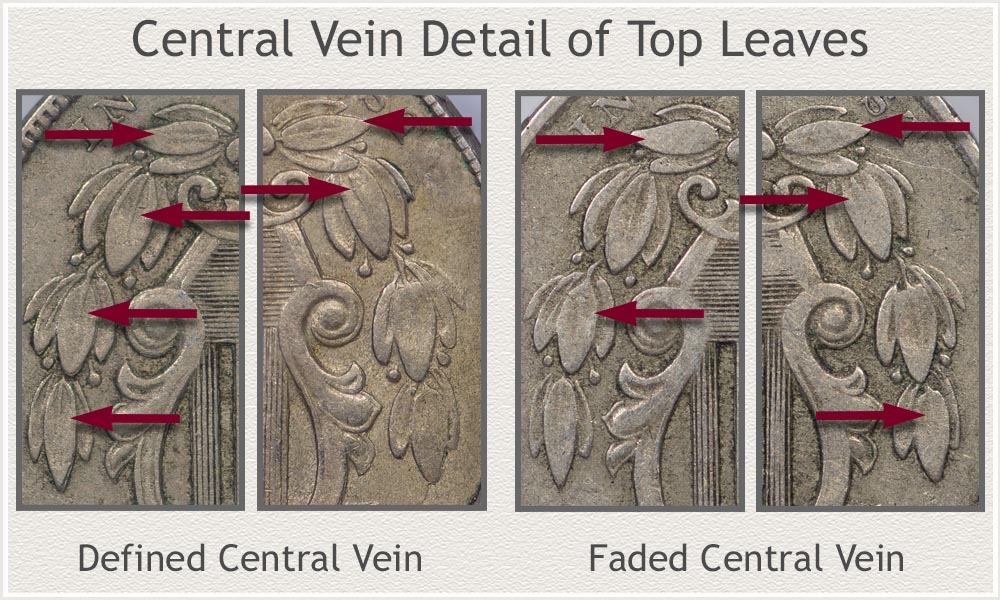 (fig. 10XF) Metrics of Defined and Faded Central Veins on Top Leaves
(fig. 10XF) Metrics of Defined and Faded Central Veins on Top Leaves
A center vein provides a high level of detail to each top leaf of the eight grouping of leaves. When judging Shield nickels considered at the Extremely Fine grade level, an inspection of vein detail provides a visual metric. Strong vein detail on most top leaves helps identify a nickel in high quality condition.
Review the illustration (fig. 10XF) showing the different appearances of these central veins. Although light wear reduces the highest contours on the leaves, a low contour within the center remains with a vein. Examples show vein detail that meets the visual metric as having a defined central vein. Missing detail in the second example eliminates the leaf from having a defined central vein. Additionally, veins with improved clarity are often found on the same coin. Use the following definitions to gauge condition of veins.
Visual Rating Definitions | Central Vein Detail
Defined Central Vein: Clearly visible vein rising within the central low contour of the leaf. Length approximately one third or more the length of the leaf. There remains a raised and rounded contour to the vein. Additionally, a short vein just visible at the stem area does not qualify for this metric. A defined vein at least a third the length of the leaf with a raised, rounded contour meets the visual metric. The purpose of this metric identifies a light wear condition.
Faded/Missing Central Vein: Wear reduces the vein to a slightly visible, flattened appearance. The vein tends to blend into the central low contour. Length of the vein appears short, less than a third of the leaf. Additionally, defining edges on the vein are difficult to see. A vein in this condition does not meet the visual metric.
Visual Metric Rating: Count/Record the number of top leaves in the eight leaf groups with a Defined Central Vein. High count is 8 Defined Veins.
Rating: Central Vein Detail
|
6 to 8 Defined Veins |
4 to 5 Defined Veins |
3 or Less Defined Veins |
The metrics of the top leaf central vein detail add a further inspection of the subtle grading points to the olive branch leaves. A combination of judging both surface wear and central detail enhance each other. 4 or More Defined Veins Rates a Positive Score meeting the Extremely Fine Grade.
Scoring: Central Vein Detail
|
|
Positive Score |
4 or More Defined Veins
Research Data Results: Top Leaf Central Vein Detail;
Study Group of 33 Extremely Fine Grade Shield Nickels
An added level of detail observed on the study group of 33 professionally graded nickels shows in the following results. This visual metric, judging condition of central veins, becomes useful when separating nickels of lower condition from the Extremely Fine grade range.
Results: Central Vein Detail | Visual Metrics Extremely Fine Grade
12% | Of the Nickels Showed 6 to 8 Defined Veins
79% | With 4 to 5 Defined Veins
9% | With 3 or Less Defined Veins
Conclusion/Key Points: Small details within the olive branch leaves contribute strong indications of a coin's overall condition. Although light wear describes the Extremely Fine grade level, wear quickly reduces visible details of the leaf veins.
Examining the nickels in the study group, 91% remain with at least 4 distinct central veins. Visible vein detail becomes a useful metric, helping identify a coin in Extremely Fine condition. A Rating of 4 or More Top Leaves with Vein Detail becomes a Positive Score.
Frame Elements of the Shield
A detailed frame borders the horizontal and vertical lines of the shield. Focus on where the inside edge of this frame meets the horizontal lines. This provides a visual metric of the nickel's condition.
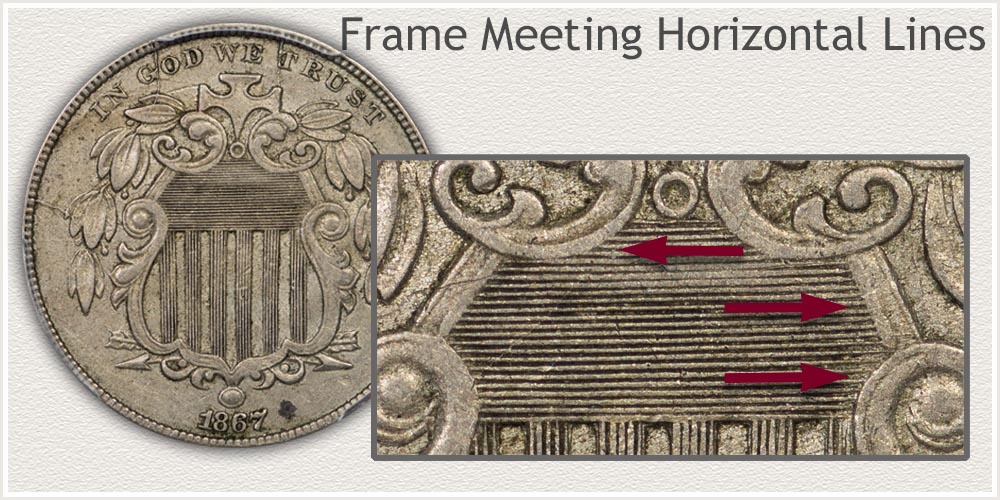 (fig. 11XF) Close-up of Frame Meeting the Horizontal Lines
(fig. 11XF) Close-up of Frame Meeting the Horizontal Lines
As indicated in the illustration (fig. 11XF) three main areas provide visual qualities used when judging condition. Judge the condition of the inner edges of the frame where they meet horizontal lines at the top, sides, and bottom area.
Visual Grading Metric: Straight Edges of Frame Meeting Horizontal Lines
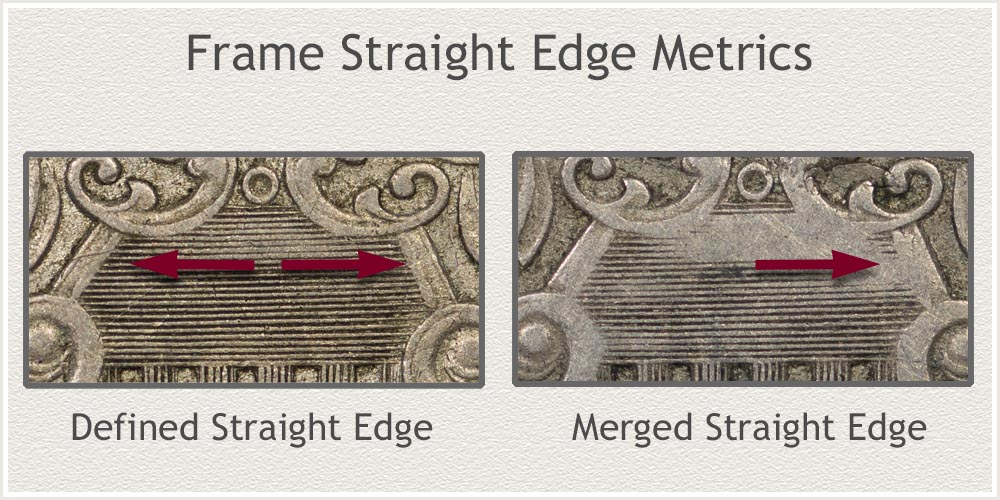 (fig. 12XF) Defined and Merged Visual Metrics of Frame Meeting Horizontal Lines
(fig. 12XF) Defined and Merged Visual Metrics of Frame Meeting Horizontal Lines
Two straight edges of the frame meet the horizontal lines, on the left and right sides. These provide a clear indication of the amount of wear. Light wear allows the inner edges of the frame to remain distinctly separate from the horizontal lines. Heavy wear shows when lines and frame begin to merge. Illustrated (fig. 12XF) compares distinct separation edges from those faded and merged. Use the following when judging the visual metric.
Visual Rating Definitions | Straight Edges of Frame
Defined and Complete Straight Edges: Clear and defined inner line where the straight edge meets the horizontal lines.
Worn and Merged Straight Edges: Parts or all of the inner straight edge merge with horizontal lines.
Inspect both sides of the frame to determine an accurate condition of the frame. Count and record the inner straight sides with defined and complete edges. High count is 2 Defined Straight Edges.
Rating: Straight Edges of Frame
|
2 Defined/Complete Edges |
1 Defined/Complete Edge |
0 Defined/Complete Edges |
Light wear shows as remaining detail within the shield. At the Extremely Fine grade level, most of the small details are visible. For this metric, 2 Defined Straight Edges Rates a Positive Score.
Scoring: Straight Edges of Frame
|
|
Positive Score |
2 Defined Straight Edges
Research Data Results: Straight Edges of Frame
Study Group of 33 Extremely Fine Grade Shield Nickels
Studying and rating the 33 Extremely Fine grade nickels provides a clear indication of the expected detail at this grade level.
66% | Rated 2 Defined Straight Edges
33% | Rated 1 Defined Straight Edges
0% | Of the Nickels Rated No Defined Edge
Conclusion/Key Points: With 66% of the nickels showing both straight edges complete, it helps define the light wear condition. Confirming light wear, the rest of the nickels, 33% had at least one edge complete. Use the Rating of 2 Defined Edges indicating a high-quality expectation of the coin. Note: A rating of 1 Defined Edge does not exclude the coin from grade level. This metric supports an overall scoring of the coin's condition.
Visual Grading Metric: Curved Edges of Frame Meeting Horizontal Lines
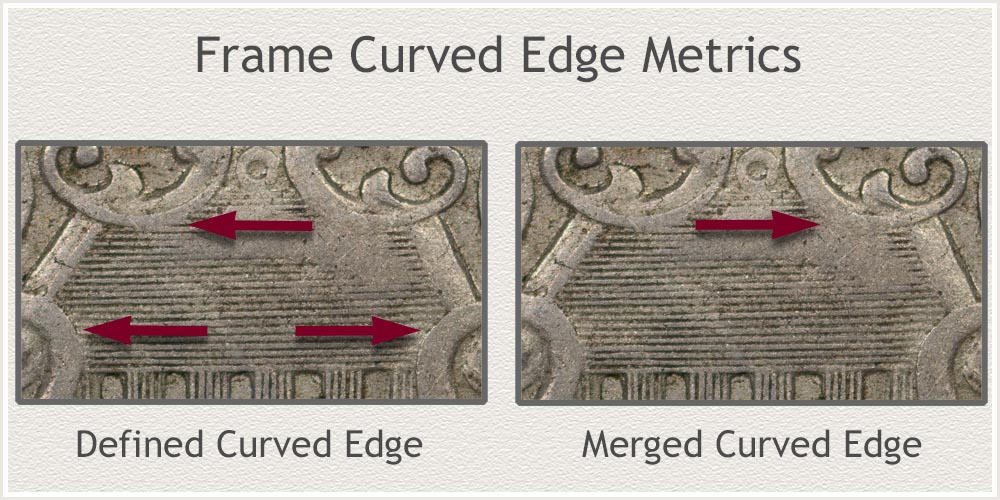 (fig. 13XF) Condition of a Defined and Merged Curve Edge of Frame
(fig. 13XF) Condition of a Defined and Merged Curve Edge of Frame
A curved inner edge of the shield's frame meets horizontal lines in four separate areas. In these areas where the frame and lines meet, the frame's relief is higher than the horizontal lines. This difference in height becomes a feature helping recognize wear on the surface of the frame. Wear causing the frame and lines to merge becomes the visual metric to judge. Compare the levels of wear illustrated (fig. 13XF) between the Defined Line and Merged/Faded Line condition.
Visual Rating Definitions | Curved Inner Edges of Frame
Defined and Complete Inner Curved Edges: A defined inner edge remains clearly visible where the frame's edge meets horizontal lines.
Merged Faded Curved Inner Edge of Frame: Wear has reduced the height of the inner curved edge of the frame to the point of merging with horizontal lines.
When viewing the curved frame elements where they meet the horizontal lines, examine and judge all sides. Rate the four areas separately. Count and record the number meeting the Defined metric.
Rating: Curved Edges of Frame
|
4 Defined Curved Edges |
3 Defined Curved Edges |
2 Defined Curved Edges |
1 Defined Curved Edge |
Scoring the condition of inner curved edges adds to an in-depth judgment of how much detail remains on Extremely Fine grade Shield Nickels. 3 or More Defined Curved Edges Rates a Positive Score.
Scoring: Curved Edges of Frame
|
|
Positive Score |
3 or More Defined Curved Edges
Research Data Results: Curved Edges of Frame Meeting Horizontal Lines
Study Group of 33 Extremely Fine Grade Shield Nickels
A clearly defined curved line indicates the light wear quality. Rating the number of complete curved frame edges of the 33 study nickels provides the following percentage results.
58% | 4 Defined Curved Edges
27% | 3 Defined Curved Edges
15% | 2 Defined Curved Edges
0% | 1 Defined Curved Edge
Conclusion/Key Points: Scoring the curved frame edges indicate a high level of detail remains in the area. With 85% of the study nickels showing 3 or more clear and defined curved edges, this becomes the standard expectation of the grade. Of Note: Using the two different metrics of Straight edges and Curved edges provides a detailed level of inspection.
Line Detail Within the Shield
Within the center of the nickel, the shield displays highly detailed horizontal and vertical lines. This large amount of fine detail provides areas to visually recognize amounts of wear. Overall, light wear shows a slight reduction of metal with only confined areas of missing design elements. A study of Horizontal line and Vertical line condition helps recognize a narrow grade range.
Visual Grading Metric: The Vertical Stripes
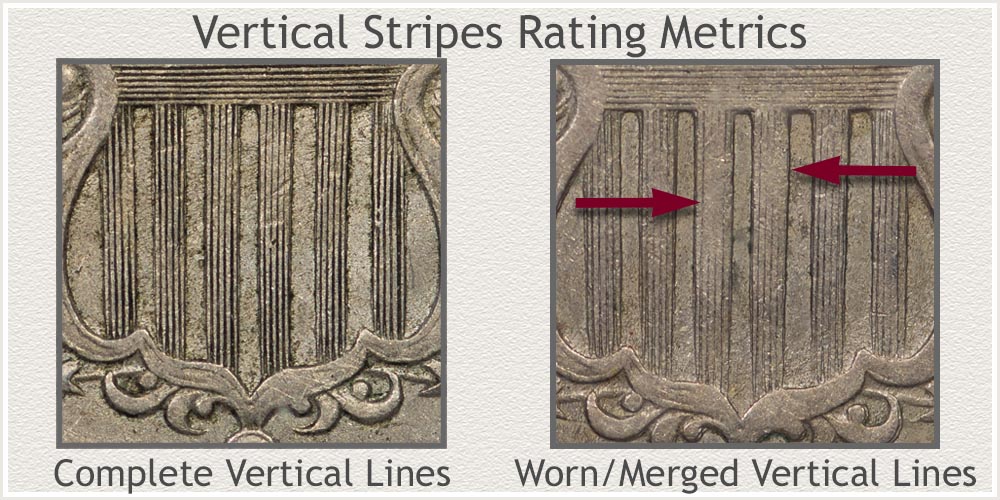 (fig. 14XF) Complete Vertical Line Compared to Worn/Merged Line Metric
(fig. 14XF) Complete Vertical Line Compared to Worn/Merged Line Metric
Vertical stripes within the shield provide a distinct and useful grading area on Shield nickels. These stripes represent the red and white bands of the Great Seal. Six red stripes are raised bars with deep recesses forming fine lines on their surface. Seven white stripes are low relief, well below the upper level of the raised bars.
It is the remaining detail of the fine lines on the raised bars, the red stripes, used as a visual metric when judging wear.
Examining the illustration (fig. 14XF) focus on the vertical raised bars. Each bar has five lines as part of the design, separated by deep recesses. This detail becomes the indicator of wear amount. Lines begin to widen and fade and eventually merge as wear occurs. Highlighted are stages of wear on the lines: Complete | Worn and Merged.
Also notice in the image (fig. 14XF) areas of wear are minor and small. Flatness covers only a small distance along the stripe. The general description of Extremely Fine grade allows only light wear on the surface. Overall, the condition of the lines fits the description.
When judging remaining detail on vertical stripes, use the following guide.
Visual Rating Definitions | Vertical Stripe Condition
Complete Vertical Lines: Lines are unbroken, extending from top to bottom of the raised bar. A worn, slightly flattened appearance without merging meets the metric. A visual distinction between lines must remain.
Worn and Merged: Merging and blending along the top of a bar spanning three or more of its fine lines. This complete lack of definition covers only a short distance along the bar.
Count/Record the number of Vertical Bars with complete fine lines top to bottom. Total High Count is 6.
Rating: Vertical Stripe Condition
|
5 to 6 Complete Lines |
2 to 4 Complete Lines |
0 to 1 Complete Lines |
The condition of the small detail of fine lines identifies light wear on the Vertical Raised Bars. 5 or More Vertical Stripes with Clear Lines Rates a Positive Score.
Scoring: Vertical Stripe Condition
|
|
Positive Score |
5 to 6 Stripes with Complete Lines
Research Data Results: Vertical Lines Within the Shield
Study Group of 33 Extremely Fine Grade Shield Nickels
The visual metric of Vertical Bars and their fine lines recorded the following percentage results on the 33 Shield nickels of the study.
Conclusion/Key Points: Most nickels displayed bars with complete vertical line detail. This confirms the overall light wear condition. Nickels in Extremely Fine grade level reached a high standard of light wear. Significantly, 75% of the coins recorded all 6 bars as complete. 5 complete bars were a majority of the remainder. Combining these metrics, a total of at least 5 bars with complete detail was found on 96% of the coins in the study group. Use the metric of 5 or more Vertical Stripes with Clear Lines Rates a Positive Score.
Visual Grading Metric: The Horizontal Line Detail
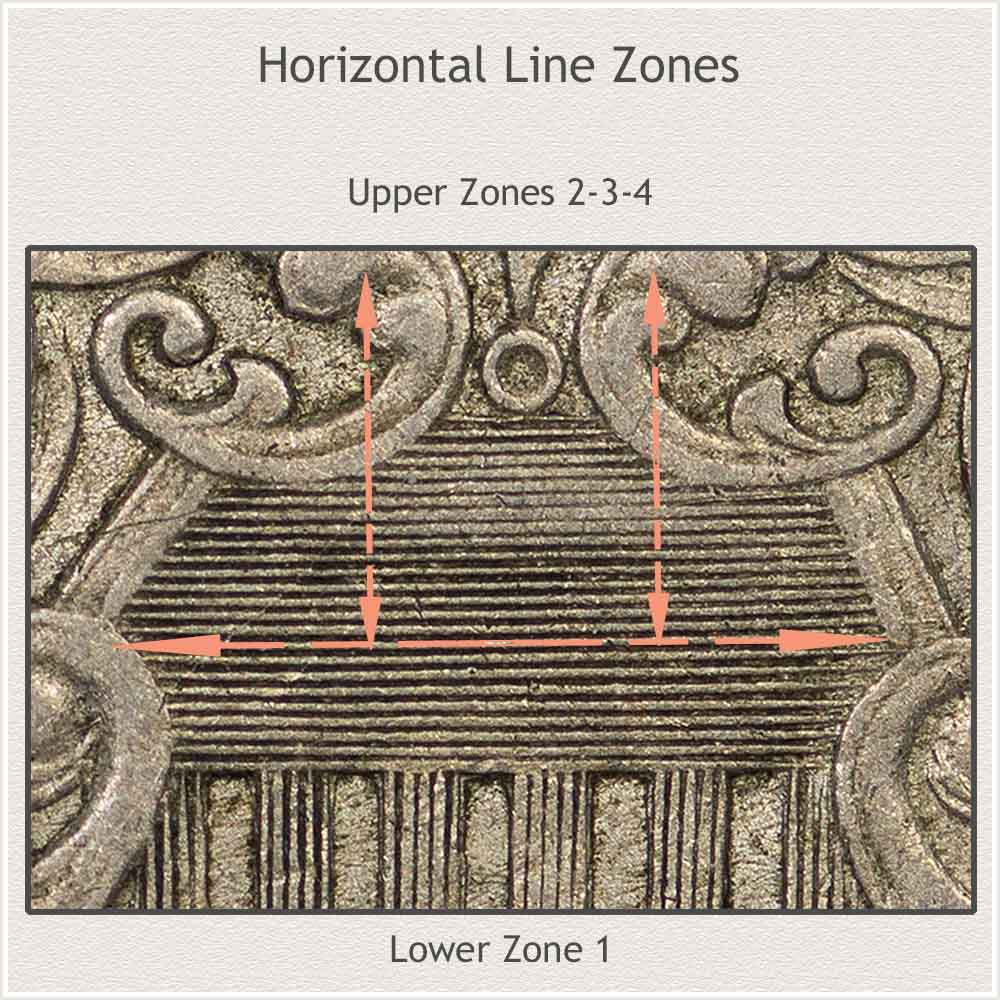 (fig. 15XF) Divide the Horizontal Lines into 4 Zones for Grading
(fig. 15XF) Divide the Horizontal Lines into 4 Zones for Grading
Displayed as the main device is a representation of the Great Seal at the very center of the Shield nickel. Highly detailed, the upper part of the shield shows fine horizontal lines created by deep recesses. Wear to the lines reduces their clarity; they begin to fade, merge, and disappear. Examine the close-up illustration (fig. 15XF) depicting this feature. At the Extremely Fine grade level, light wear describes the condition of the coin. When dividing the horizontal line area into zones, a detailed, visual judgment of condition provides accuracy.
Using reference points (fig. 15XF), divide the horizontal lines into 4 separate zones. First step: extend a line from the top of the left spiral element to the top of the right spiral element. This separates the top from the bottom. The entire lower half becomes zone 1.
Zones 2, 3, and 4 are within the upper area. To divide the top area into thirds, use the two small, round, high relief elements in the frame just above the horizontal lines. Project a line down from the left side element and a line downward from the right side. This divides the upper half of the horizontal lines into three distinct zones.
The following illustrates and describes how to judge the condition of the 4 zones.
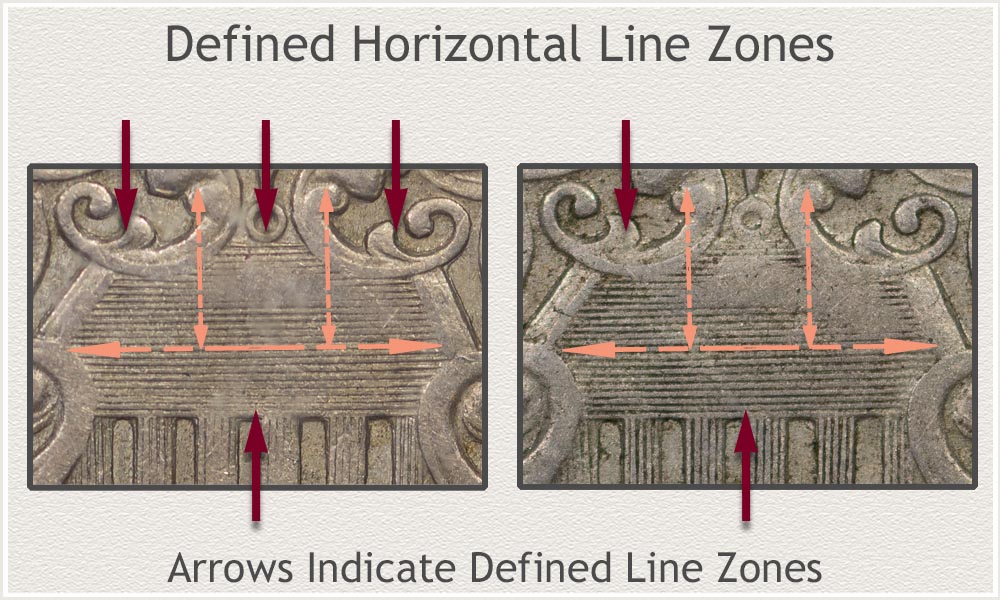 (fig. 16XF) Defined Horizontal Line Zones Highlighted
(fig. 16XF) Defined Horizontal Line Zones Highlighted
Visual Rating Definitions: | Lower Horizontal Lines Condition
Defined Lines: Zone 1: An Extremely Fine grade nickel displays only light wear. Within Zone 1, most of the lower half of the horizontal lines remain visible. Note they extend side to side. Slight wear visible in a small area is acceptable. Meeting this condition rates as Defined Lines.
Visual Rating Definitions | Upper Horizontal Lines Condition
Defined Lines: Zones 2-3-4: Wear appears in Zones 2-3-4 in various amounts. A zone with approximately half or more lines visible rates as Defined Lines. These levels of wear show as smoothing, merging, and disappearance of individual horizontal lines. The visual metric determines the amount of visible lines remaining per zone. Judge and gauge the area of each zone individually.
Inspect and rate the condition of horizontal lines within each zone. Count the number of Defined Lines Zones. High count is 4.
Rating: Defined Horizontal Line Zones
|
1 Zone: Defined Lines |
2 Zones: Defined Lines |
3 Zones: Defined Lines |
4 Zones: Defined Lines |
3 or More Defined Zones Rates a Positive Score. With the rating metrics recorded, score the condition of horizontal lines. This gives a detailed assessment of the horizontal lines and how they grade.
Scoring: Defined Horizontal Line Zones
|
|
Positive Score |
3 or More Zones with Defined Lines
Research Data Results: Defined Horizontal Line Zones
Study Group of 33 Extremely Fine Grade Shield Nickels
The following are rating percentages of the 33 nickels in the study group.
64% | 4 Zones with Defined Lines
33% | 3 Zones with Defined Lines
3% | 2 Zones with Defined Lines
0% | 1 Zone with Defined Lines
0% | 0 Zones with Defined Lines
Conclusion/Key Points: A deliberate and careful inspection of the horizontal lines provides a strong indication of grade level. 97% of the professionally graded Shield nickels displayed sufficient detail to rate 3 or more zones as Defined Lines and a positive score. Horizontal lines with most of their detail clear quickly separate a nickel from those in lower condition.
Final Visual Metric Scoring | Extremely Fine Grade Shield Nickel
Judging the condition of a coin with light wear required inspecting and rating most of its finer design details. From the date along the perimeter to the center horizontal lines, every feature contributes a grading metric.
Compile the Positive Scores arriving at a Final Score.
A Final Score of 11 or More Positive Metrics strongly indicates a Shield nickel in Extremely Fine grade range.
Final Scoring: Visual Metrics Extremely Fine Grade Shield Nickel
11 or More Positive Metrics
Rates a Positive Final Score
|
Positive Score |
Design Device |
Visual Grade Metric |
|
|
Date |
Clear Date |
|
|
Rim |
Complete Rim |
|
|
Motto |
Full Motto |
|
|
Cross: Straight Inner Edge |
2 to 3 Raised Straight Edges |
|
|
Cross: Curved Inner Edges |
3 to 4 Visible Edges |
|
|
Top Leaf Outline |
7 to 8 Leaves Complete Outlines |
|
|
Top Leaf Wear Amount |
6 or More Top Leaves with Light Wear |
|
|
Central Vein Detail |
4 or More Defined Veins |
|
|
Straight Edges of Frame |
2 Defined Straight Edges |
|
|
Curved Edges of Frame |
3 or More Defined Curved Edges |
|
|
Vertical Stripe Condition |
5 to 6 Complete Lines |
|
|
Defined Horizontal Line Zones |
3 or More Zones with Defined Lines |
Research Data Results: Final Scoring
Study Group of 33 Extremely Fine Grade Shield Nickels
Following are the percentages of nickels and their Final Scoring results. High score is 12.
58% | Of the Nickels Scored the High Score of 12 Positive Metrics
24% | Scored 11 Positive Metrics
6% | Scored 10 Positive Metrics
6% | Scored 9 Positive Metrics
6% | Scored 8 Positive Metrics
0% | Scored Less Than 7 Positive Metrics
Conclusion/Key Points: Most of the study nickels placed within the top two Scores of 11 to 12 Positive Ratings. Note the low percentage of nickels with 10 or less positive metrics. This becomes a strong dividing line. With 82% scoring 11 to 12 Positive Ratings, this determines the score, placing a nickel within the Extremely Fine grade condition.
A nickel scoring 8 to 10 requires a second inspection. Nickels in this range are strong candidates to qualify at this high grade. Pleasing surfaces on the nickel, lack of marks, and overall crisp appearance add eye appeal and improves the judgment of condition.
Use 11 or More Positive Metrics to Rate a Positive Final Score.
Recognizing and judging a nickel in Extremely Fine grade greatly improves its Shield Nickel Value.
References
U.S. Mint. Symbols on Our Coins
https://www.usmint.gov/learn/history/us-circulating-coins
Department of State The Great Seal of the United States July 2003
U.S. Mint. Catalogue of Coins of the United States
https://nnp.wustl.edu/library/book/554591
Coin Values | CoinStudy Articles
Shield Nickel | Visual Grading Metrics Series
Visual Grading Metrics: Shield Nickels Mint State Grade
Visual Grading Metrics: Shield Nickels Fine Grade
Visual Grading Metrics: Shield Nickels Good Grade
Grading Shield Nickels | Starting Guide
Becoming familiar and recognizing the overall condition of a Shield nickel starts the grading process.
How to Grade Shield Nickels | Visual Guide
The Extremely Fine Grade Shield Nickel Using key features specific to each grade, plus video, images, and descriptions, help understand the different grades. Extremely Fine grade Shield Nickels and their subtle condition differences are highlighted.
Shield Nickel Value | Condition and Grade Determine Worth
Value chart lists all dates of the Shield nickel series. Noticeable are the high premiums awarded to nickels in Extremely Fine grade. A process moves through a defined value method, discovering how much a Shield nickel is worth.
★Coin Values Discovery... finds Old Nickel Values and...
All old US coin values presented in charts. Review and match your coin to the index of coin series. Value charts, grading images, and descriptions uncover how much your box of old coins is worth. Begin the step-by-step value process for each coin series.
